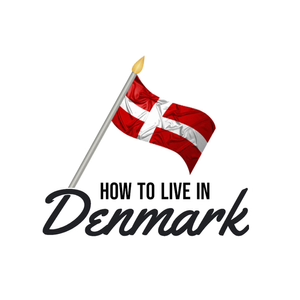
How to Live in Denmark
Kay Xander Mellish
All episodes
Best episodes
Top 10 How to Live in Denmark Episodes
Goodpods has curated a list of the 10 best How to Live in Denmark episodes, ranked by the number of listens and likes each episode have garnered from our listeners. If you are listening to How to Live in Denmark for the first time, there's no better place to start than with one of these standout episodes. If you are a fan of the show, vote for your favorite How to Live in Denmark episode by adding your comments to the episode page.
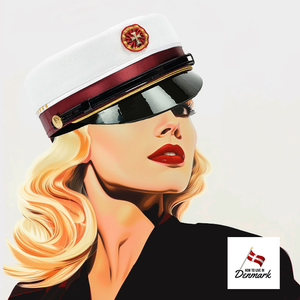
The white magic of the Danish graduation hat
How to Live in Denmark
06/12/24 • 9 min
In June of each year, the streets of Denmark are suddenly full of young people wearing stiff white caps with bands of various colors - burgundy, midnight blue, light blue. These teenagers have just graduated from gymnasium, the Danish equivalent of high school, and the white hat is a sign of that accomplishment.
They wear the white hat everywhere they go for the two or three weeks after final exams, and it awakens a deep sentimentality in the usually practical and private Danes. It has a sort of magic.
When my daughter received her white cap last year, total strangers stopped her in the street to say “Congratulations on the hat” – tillykke med huen. Bus drivers congratulated her as she boarded, and so did supermarket clerks at the checkout counter.
Getting the hat is seen as a very happy occasion on the road from childhood to the big wide world. The white cap holds a special place in the Danish national consciousness.
The open-backed truck tour
If you visit in Denmark in June, you’ll see teenagers celebrating their graduation, riding through town on the back of open-backed trucks, wearing their fresh white caps and cheering or blowing whistles. Using there’s some pop music pumping at a very high volume.
The sides of the truck are covered with white banners, traditionally bedsheets, on which are painted slogans that are more or less obscene.
Everybody on the truck except the driver is several beers in and shouting at passerby on the sidewalk, who shout back.

New Year's Eve Traditions in Denmark
How to Live in Denmark
12/26/23 • 6 min
It’s almost Week 1, in the weekly numbering system that’s widely used in Northern Europe, where the year starts with week 1 and runs through to Week 52 or 53, depending on the calendar. It’s very efficient for planning, so you don’t have to say something messy like “What about that week that starts Monday June 3...”
Week 1 starts on January 1, and everything follows that in perfect order.
But before January 1 we have New Year’s Eve, a day that fills me with trepidation to be honest, because in Denmark, New Year’s Eve is all about amateur fireworks.
Cannonballs, Roman Candles, Ding Dongs, Triple Extremes, these are the fireworks you can purchase and set off yourself in a local parking lot, terrifying any nearby dogs and cats.
Having a family member in the hospital business, I can’t help but think that today, December 26, there are a few amateur fireworks fans who have perfectly well-functioning eyes and fingers right now who won’t have them on January 2.
The Queen's Speech
New Year’s Eve celebrations start at 6pm, when the Queen Margrethe gives her annual speech, live.
To the uninitiated, this looks like a woman sitting at her desk reading from a pile of papers – she refuses to use a TelePrompter – but it’s all been intricately planned, from the clothes to the jewelry to the flowers to the text itself to reflect the themes and priorities of the year gone by. There’s even a website that gives odds on what words and themes will appear.
The Queen now keeps her pile of papers together with a paper clip. In past years, she left them loose, and on one particular occasion they got out of order and she had to desperately search through them on air to find her place.
The comedian Ulf Pilgaard, a large man who dressed up as a colorful burlesque imitation of the Queen, used to make this incident part of his act, throwing papers up in the air like Harpo Marx.
Just as an aside, when this comedian who imitated the Queen retired last year, the Queen herself showed up at his final performance and shook his hand. Having such a good sense of humor about herself is why Queen is so beloved, even by people who do not really like the monarchy.
Some Danes even stand up to watch the Queen’s speech on TV. It always ends with “Gud Bevare Danmark”, God Protect Denmark.
"Wreath cake"
After the speech, it’s dinner time, followed by a very sweet cake called kransekage – which translates to “wreath cake.” It’s made of a lot of rings delicately placed on top of each other, in a little tower. There’s lot of marzipan involved in this cake. I’m not a marzipan fan myself, but if you are, you’ll like this cake.
Read more at howtoliveindenmark.com
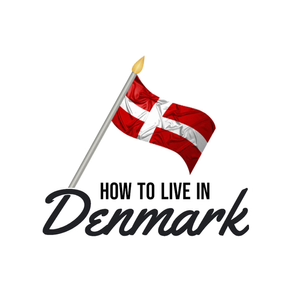
The Danish job interview
How to Live in Denmark
05/22/16 • 10 min
If you’ve been asked for a job interview at a Danish company, congratulations. Danish companies don’t like to waste time, so they wouldn’t be setting aside time to meet you if they didn’t think there was a solid chance they might hire you.
Job interviewing in Denmark is a difficult balance, because the Jantelov makes all forms of bragging or self-promotion distasteful to the Danes. You’ve got to convince the person interviewing you that you’re skilled and capable without sounding like a used car salesman.
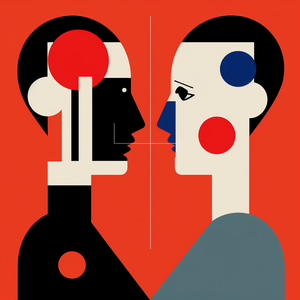
How to Handle a Conflict in Denmark
How to Live in Denmark
12/18/23 • 6 min
If you are an international who lives in Denmark, or someone who wants to, you have to learn the Danish way of dealing with conflict. This might be with a colleague, or your upstairs neighbors, or the authorities at the commune.
In these cases, it’s very important not to lose your temper or raise your voice. And this can be tricky if the culture you come from, your culture of origin, is a passionate culture.
Denmark is not a passionate culture. If you hear someone talking about their passion here, it's almost always some sort of hobby, or the summer home they have been fixing up for years. Their passion is almost never a person or a cause. And they generally use the English or French word passion, not lidenskab, which is the rather clumsy Danish translation.
So, the keywords to handling conflict here are not strength and passion, they are humor and equality.
You have to take the approach that you and the person you disagree with are equals. Your counterparty isn’t someone you can push around, but they’re also not someone better than you that you have to bow down to.
One of Danes’ favorite expressions is øjenhøjde, or eye level. They love that concept. When Prince Christian, the future king of Denmark, recently turned 18, several of his birthday greetings from the public said, Remember to always stay at eye level with your people.
The person you disagree with is your human equal, even if they’re a teacher or a manager or someone who works for the government.
The other best strategy getting a conflict resolved in Denmark is to find the humor in it. If you can make the other person laugh at the ridiculousness of it all, you’re halfway there.
Keep it as light as you possibly can, assume good faith, and assume that the other person really would like to solve the problem, and assume that it is solvable, which isn’t always true, but it’s a good first assumption.
Humorously acknowledge your contribution to the problem, whatever it might have been, and own your mistakes. Danes really like people that admit they’ve made a mistake and have a sense of humor about it.
Be as practical as possible. Danes are practical to a fault. Focus on something that can really get accomplished, not big noble concepts of truth and justice.
I have seen internationals in Denmark make disagreements much worse than they have to be by raising their voices, telling the other person they are racist or sexist, threatening to call in somebody’s boss or threatening to expose them online, which is illegal, by the way.
Denmark has very strict privacy laws – if you catch someone stealing your bike and you post a photo of them online, you’re the one who will hear from the police first.
Read more at howtoliveindenmark.com
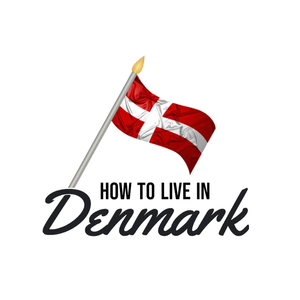
How to find a job in Denmark: Not easy, but it can be done
How to Live in Denmark
02/23/14 • 6 min
Finding a job anywhere is a headache, and Denmark is no different. And let's be frank, if the employer has a choice between a foreigner and a Dane, they're probably going to hire the Danish person. The Danish person knows the language, the Danish person knows the culture, the Danish person knows what type of cheese to bring for the Friday morning shared breakfast. Nevertheless, it is possible for a foreigner to find work in Denmark. Here are my tips for a successful job search in Denmark.
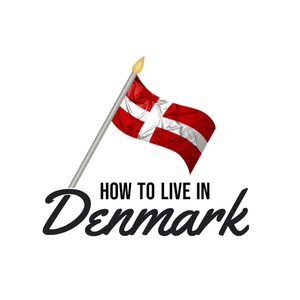
Danish Names: Why Bent is not bent, and why It's bad to be Brian
How to Live in Denmark
03/02/14 • 4 min
Danish names are very strongly stratified by age. Ole and Finn and Knud and Kaj and Jørn and Jørgen and to some extent Poul and Per, are over 50. Their wives and sisters and secret lovers are Inger and Karin and Kirsten and Ulla. Or Bente. Another guaranteed old ladies’ name is Bente. Bent is the male version. Being named Bent is a problem for Danes who travel, because in many English-speaking countries, ‘bent’ is old-fashioned slang for ‘gay.’ In those countries, if you hold out your hand and say, ‘Hi, I’m Bent,’ you may get an unexpected reaction.
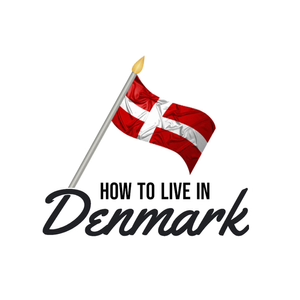
Dating in Denmark, Part 2: Dating Danish men, a guide for the foreign woman
How to Live in Denmark
02/16/14 • 5 min
If you are a romance novelist, the Danish man is not your dream man. He will not write poetry and pursue his beloved to the ends of the Earth. He won't send flowers, he won't buy chocolates. He won't even help carry packages.
That said, if you’re a feminist, a Danish man IS your dream man. He will cook and help with the housework, and spend time with the kids. He'll respect your opinion, and he won't force himself on you. In fact, you may have to force yourself on him. But if you do, he’ll usually be really grateful.
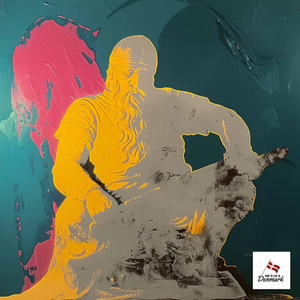
Who is Holger Danske?
How to Live in Denmark
07/07/24 • 6 min
Many countries have a fictional character who represents them. Uncle Sam for the USA, Marianne in France, Mother India. Others have a legendary figure, who was real at one point but is now shrouded in myth, like King Arthur in England.
For Denmark, Holger Danske is both. He was probably real, although he didn’t live in Denmark.
He was a Danish knight living in France in 8th century, serving Charlemagne and he appears in several of the epic poems of the time as Ogier the Dane. When those poems were translated into Old Norsk, he became Oddgeir danski, which gradually morphed into Holger Danske.
He has been a hero for centuries. And he is a sleeping hero.
The legend is that when Denmark is in trouble, Holger Danske will rise from his slumber and come to its defense. This is why during World War II, when Denmark was occupied by the Nazis, one of the largest resistance groups called itself Holger Danske.
If you’re not Danish, you may have experienced Holger Danske in the form of consumer products.
There is a Holger Danske moving company with trucks all over Denmark, a Holger Danske beer, Holger Danske Aquavit liquor, Holger Danske tobacco. There’s a Holger Danske bar. Holger Danske has appeared on the Danish national football shirt.
And, very famously, there’s a statue of Holger Danske in the basement of Kronborg Castle, often known as Hamlet’s Castle, in Helsingør, Denmark – which Shakespeare referred to as Elsinore.
I go by the castle in my new audio tour of Helsingør for VoiceMap. Check it out at voicemap.me/hamlet.
--------------
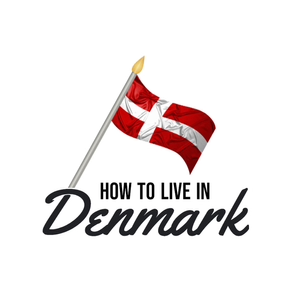
Alone for the holidays: What to do for Christmas in Denmark when you're on your own
How to Live in Denmark
12/15/18 • 7 min
Being alone for Christmas in Denmark can be tough – one of the downsides of Danish "hygge" is that people who are not inside the "hygge" circle can feel shut out and very alone.
Here are our tips for having a good holiday anyway.

Danes & IT: Anyone can guess your CPR number
How to Live in Denmark
05/31/14 • 6 min
Ordinarily don’t get my technology news from the local newspaper sold by the homeless in Denmark, but I did this week. First of all, I learned that you can pay your homeless newspaper seller by text message. If you don’t have loose change, as I often don’t, you can send a text to the newspaper seller’s registration number, along with the amount you want to give him, and the seller gets paid right away.
Secondly, I learned that some homeless people have iPhones. (pause). Not my particular seller, but another reader had written a letter to the editor of the newspaper saying he’d try to buy a paper the previous week, but his seller had been too wrapped up in his iPhone to pay attention to a potential customer. The letter writer was asking if it made sense to spend 20 crowns on a newspaper to help a man....who had a phone worth at least 2000 crowns.
The newspaper had a good response. They said an iPhone was a perfect device for a homeless person. It allowed him to keep all the information he needed in one place – government documents, health records, family photos. And it was a way for him to get phone calls and emails related to housing or jobs. I thought that was a very sensible approach.
Danes have a very sensible approach to IT in general.
The CPR number is a national menace.
That said, I have a great fear that more cybercrime and identity theft is on the way to Denmark. As those of you who live here know, the country’s IT systems are all based around something called the CPR – the central person register. Everyone has a CPR number, and you use it for everything – for banking, for the doctor, for school, for taking books out of the library. My daughter used hers last week to sign up for a Bhangra Dance course during summer vacation.
So, lots of people have your CPR, and if they don’t, it’s pretty easy to guess. Your CPR number is your birthday, plus the century your card was issued in, plus 2 random numbers, plus your gender. Did you know that – men have uneven CPR numbers, and women have even numbers? I did not, until I looked it up.
Anyway, the CPR was probably high tech in 1968 when it was first introduced. But now I think it’s a national menace. Anyone who has your CPR can impersonate you. So far it’s been mostly minimal damage. People give your CPR number when they get caught riding the S-train without a ticket. Or people take out SMS loans using your CPR number. But the potential for trouble is certainly large if the number that controls basically your entire life in Denmark is somehow hacked.
Show more best episodes

Show more best episodes
FAQ
How many episodes does How to Live in Denmark have?
How to Live in Denmark currently has 142 episodes available.
What topics does How to Live in Denmark cover?
The podcast is about Expat, Places & Travel, Society & Culture, Podcasts, Danish, Business and Careers.
What is the most popular episode on How to Live in Denmark?
The episode title 'Making Danish friends: A few tips based on experience' is the most popular.
What is the average episode length on How to Live in Denmark?
The average episode length on How to Live in Denmark is 7 minutes.
How often are episodes of How to Live in Denmark released?
Episodes of How to Live in Denmark are typically released every 22 days, 6 hours.
When was the first episode of How to Live in Denmark?
The first episode of How to Live in Denmark was released on Jun 26, 2013.
Show more FAQ

Show more FAQ